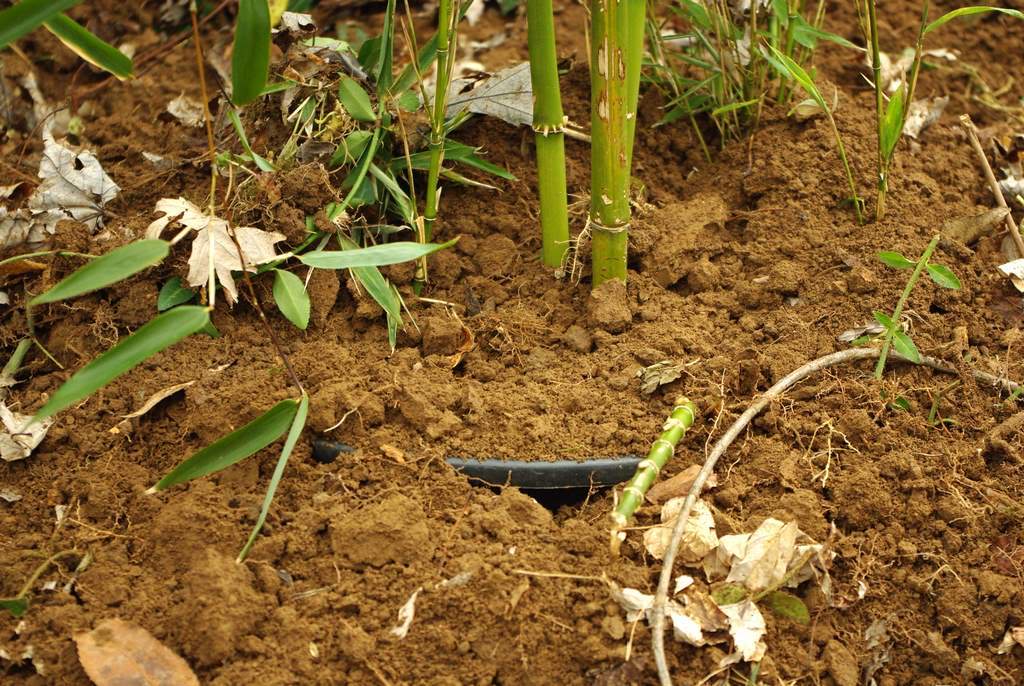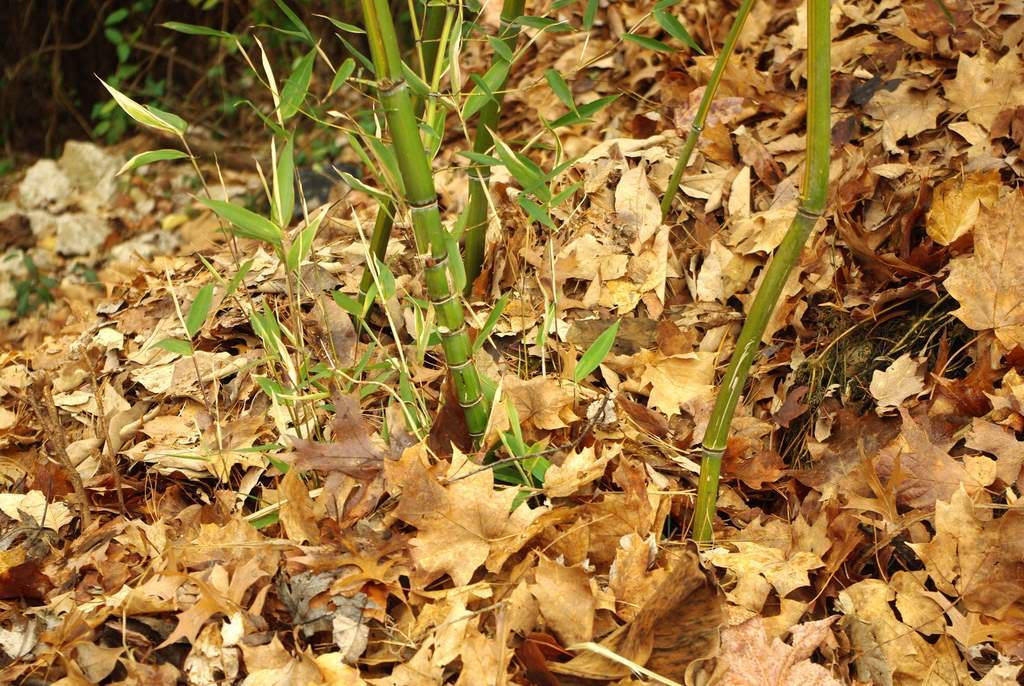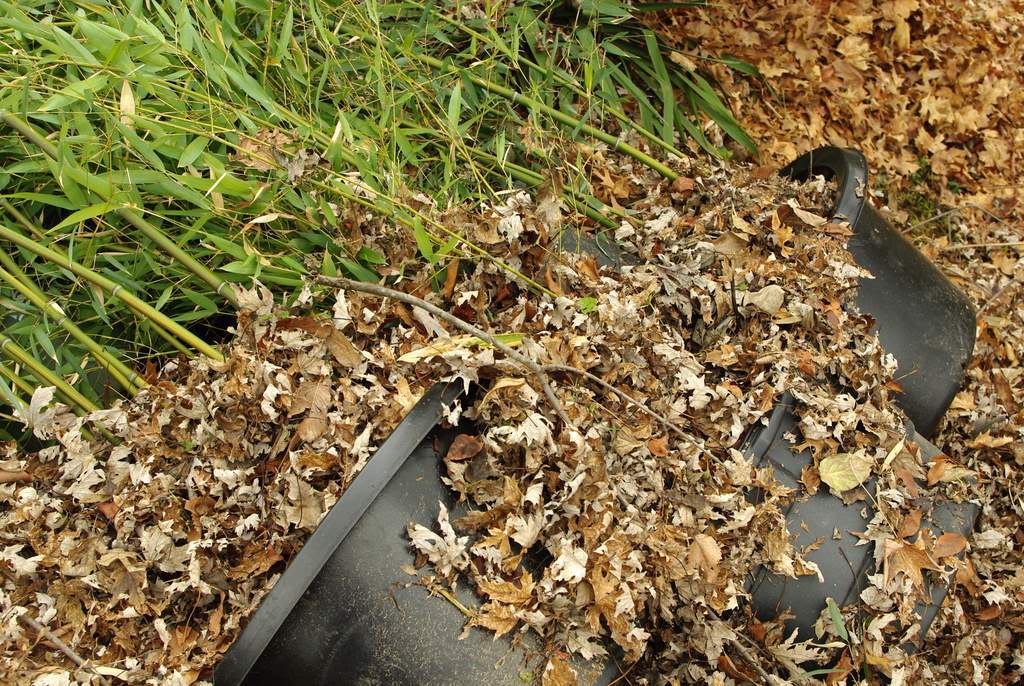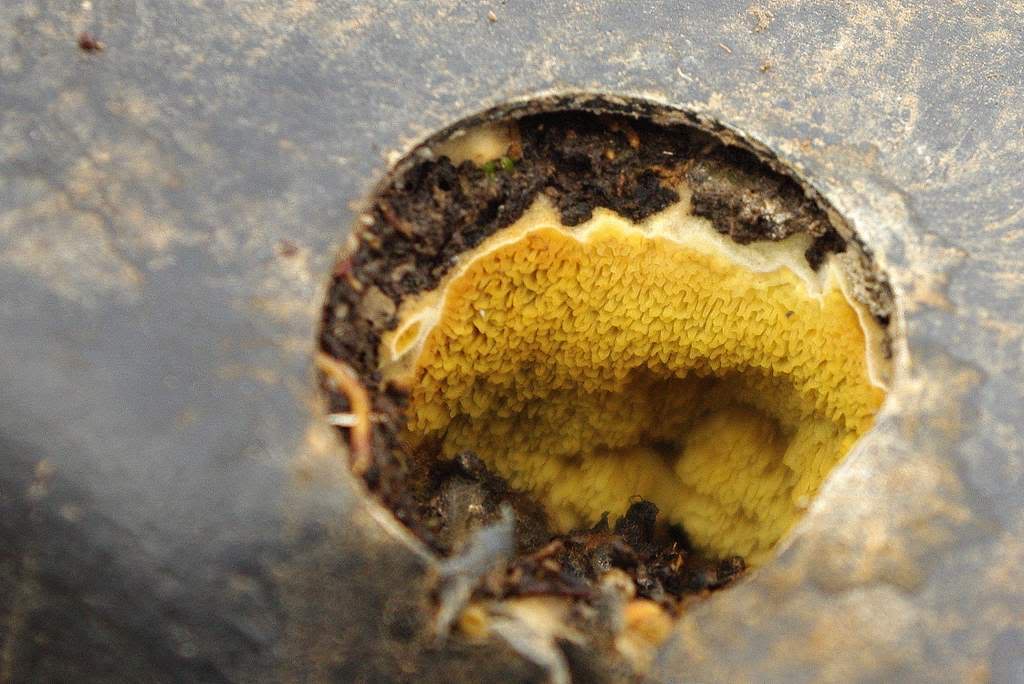An alternate title for this post could be "how to greatly underestimate the time and effort a job will take when it's only 35ºF and windy". My goal was to get my large potted bamboos ready for winter, and although I had a plan ready before I got started, it ended up taking me most of the day.
With temperatures expected to get down into the upper teens (F) Sunday night, I knew I had to get these plants taken care of this weekend, and better to jump into the task today in case something goes wrong and I need more time.
I've already put all of my smaller potted bamboos into the greenhouse. All that was left were a few large potted bamboos -- some that spent last winter in the greenhouse but are now too tall to go back in, some that came from divisions I dug from Michael's garden, some from divisions from the plant I removed from my yard this summer.
My plan was to lay the majority of the pots down and tarp over the plants. This would keep them out of the cold, dry winter winds and give them the best chance of retaining green leaves -- those leaves would help the plant in the spring.
Although I grow cold-hardy bamboos, some of them are more cold-hardy than others. Depending on the severity of our winter, these plants could suffer some serious damage. I'll talk about types of bamboo cold damage in another post, but for now just know that keeping as many green, living leaves through the winter is a good thing, and is my goal.
There were a few problems with my "lay them all down" plan, since I had more large pots than I realized: twenty-four of them. They range in size from 15 to 25 gallons, with most at 20 gallons -- approximately 2 feet in diameter. These are pretty heavy to move, but dragging them around isn't impossible. Trying to figure out how to arrange a couple dozen of these when they're laying on their sides, and where exactly to put them all -- these were problems.
After a bit of thought, I decided that this pot that kept falling over was in a pretty good spot:
I'd just move it a bit to the left so it would cover two of my "newly-planted" bamboos: the variegated one in the photo above (Hibanobambusa tranquillans 'Shiroshima'), and the Shibatea kumasaca seen here already under some foliage:
Since I couldn't get all of the pots in that one area, I put some of them nearby in a second "pile", but figuring out how to arrange the pots was pretty tricky:
I also decided that even with two piles I just couldn't fit all of them under the plastic, and I wanted to do some experimentation anyway, so some of them were buried in the compost pile:
Some of the pots were buried in the soil completely:
and one was buried in the soil only partially:
All of these buried plants were either Phyllostachys aureosulcata ("Yellow Groove" bamboo), or Phyllostachys bissetii (David Bisset's bamboo) -- two of the most cold-hardy around. They have the best chance of making it through the winter with minimal damage, and if they do well unprotected I'll know that I can leave the other pots of the same species unprotected next year and save myself some work.
After getting the pots all arranged on their sides, I packed around them with leaves for some insulation:
You get a different perspective on the plants when they're laying down like this -- this one drainage hole has some interesting fungus growing in it:
Since the sideways pots now have their bottoms exposed to the cold air, I decided to mulch around them. I was planning on using free mulch from the community pile, but that pile was empty so I had to buy the mulch:
That's probably for the best, as this is a better grade of mulch and I hopefully won't be overrun with mushrooms next year as I was when I used the community mulch before.
So all mulched, and ready for the plastic:
Now I just need to roll out the plastic and cut it to length:
Then unwrap it and cover the plants:
Since it was pretty windy today this was more difficult than it should have been, but with several bricks, concrete chunks, and landscape fabric pegs I eventually got the plastic all tied down:
That's one pile down, and one to go. Unfortunately I needed to go to the hardware store to buy more plastic and when I got back it was getting too dark to take more photos. The second pile was actually a bit more trouble because it was too wide, and I had to use a second piece of plastic to finish covering it.
I'll post more photos of the completed project later this week, as I expect some adjustments will be needed: more pegs or weights to hold things down or the correction of some other unexpected issue.
Note that if I lived in an area that gets a lot of snowfall I could probably have skipped using the plastic, as the snow cover -- if it were deep enough to bury the laying-down bamboo -- would have protected the foliage perfectly. We don't have reliable snowfall though, so plastic will provide the protection.
Also, I put this task off for as long as I could, not because I didn't want to do it. I delayed because I wanted to ensure that mice, voles, and other critters who might find potted bamboos to be a nice winter buffet had time to build their winter nests somewhere else. I had some problems with rodents last year in the greenhouse, and other bamboo growers I know have had problems with bamboo rhizomes being eaten, so I don't want any of those animals to even know that these relatively warm bamboo tents exist.

















Alan, great writeup and photos. Even though our climate is mild enough that we don't need to take quite the same precautions that you do, I learn a lot from reading about all you do.
ReplyDeleteThe point I think I didn't really get across in this post is that I haven't done this before -- the laying down of large pots and tarping over them is new for me. I know other bamboo growers who do this with smaller pots so in theory it should be fine.
ReplyDelete.
I'm hoping my experiments will show that I can do next work next year. =)
That should say "...show that I can do LESS work next year."
ReplyDelete